Artwork a colourful representation of the future of decades of graduates
NAIT’s “technology mosaic” may qualify as one of Edmonton’s forgotten pieces of fine, if somewhat unusual, art.
If you’ve been to the original 1960s-era section of Main Campus you’ve likely seen it – from a distance. Like the pricey work of a European master, it’s behind glass, in this case the windows of the North Lobby, which looks onto a grassy courtyard where the art brightens most of an exterior wall.
Completed in time for the polytechnic’s official opening in 1963, the mosaic focuses on technology and trades that composed most of NAIT’s earliest offerings (business programming was in its infancy). Representations of chemistry, construction, automotives, petroleum extraction and more are connected within a machine-like structure, as if each element were a cog required for the whole to function.
For its 60th anniversary, we’ve pieced together a brief history of this relic from the polytechnic’s earliest days – one that has survived as a colourful record of a purpose and intention that has remained fundamentally intact for six decades.
A "rustic mosaic picture"
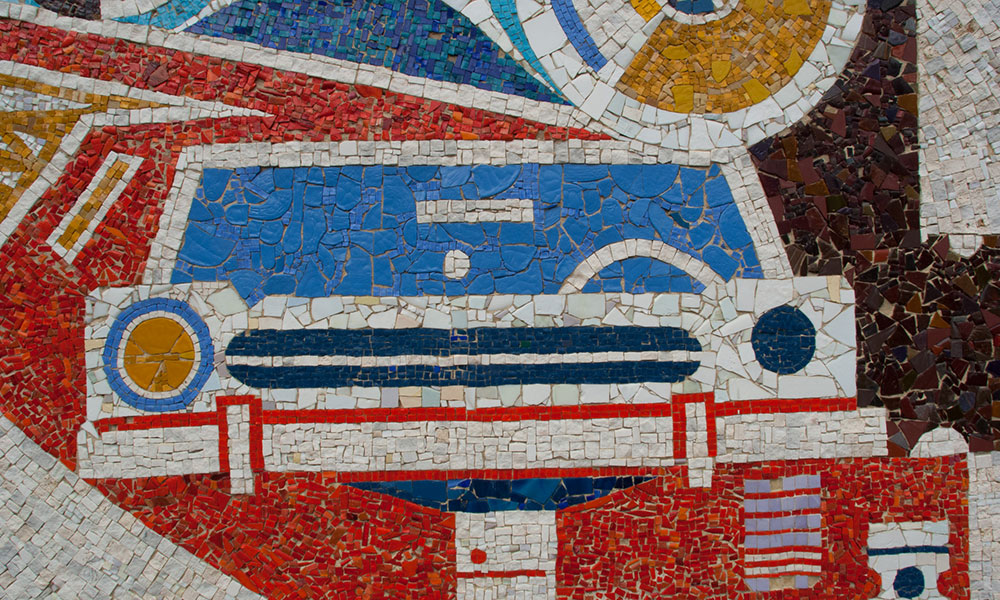
The program from NAIT’s official opening on May 27, 1963 (presided over by then Alberta premier Ernest Manning) describes “The Mural” as a “rustic mosaic picture,” reflecting its blend of abstract and realistic imagery.
It was designed by a “European artist,” the program continues, and constructed in Toronto over six months before being shipped to Edmonton in sections glued to paper. It was affixed to the wall thanks to “the labours of seven men for a further six months,” and
- is made up of seven types of marble
- contains 600 pieces per square foot
- comprises more than 200 colours
- measures 11.5 by 68 feet (3.5 by 20.7 metres)
The European artist
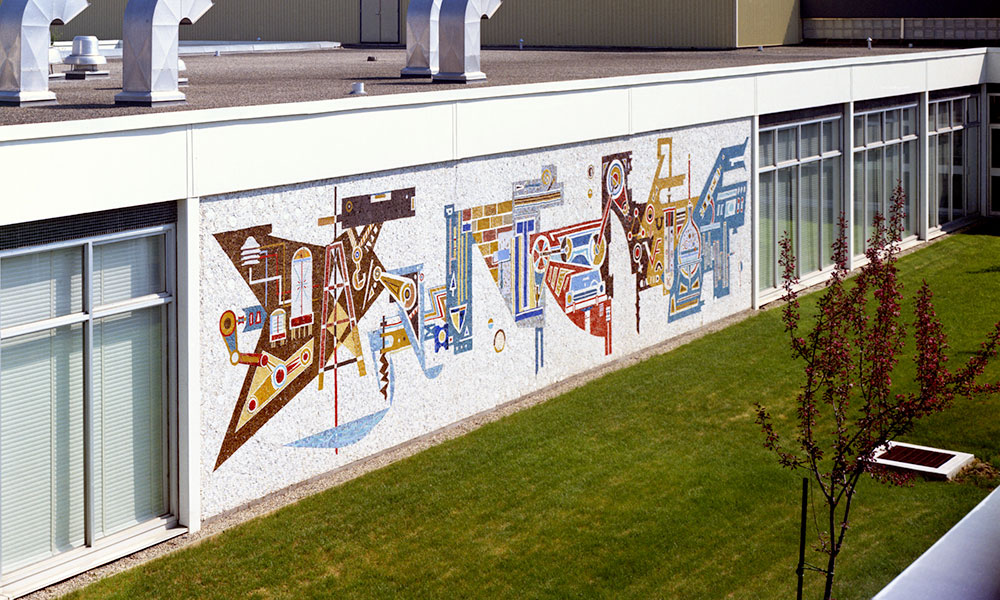
The “European” artist was Alexander von Svoboda, who was born in Austria in 1929 and moved to Toronto in 1950, after serving in WWII, which included a harrowing escape as a prisoner of war from Russia. Von Svoboda's artistic career began with pieces for restaurants and hotels before graduating to churches, synagogues and institutional buildings.
His work, which borrows from classic Italian mosaic techniques, can be found elsewhere in Edmonton, including at the Royal Alexandra Hospital.
Modern art for a modern campus
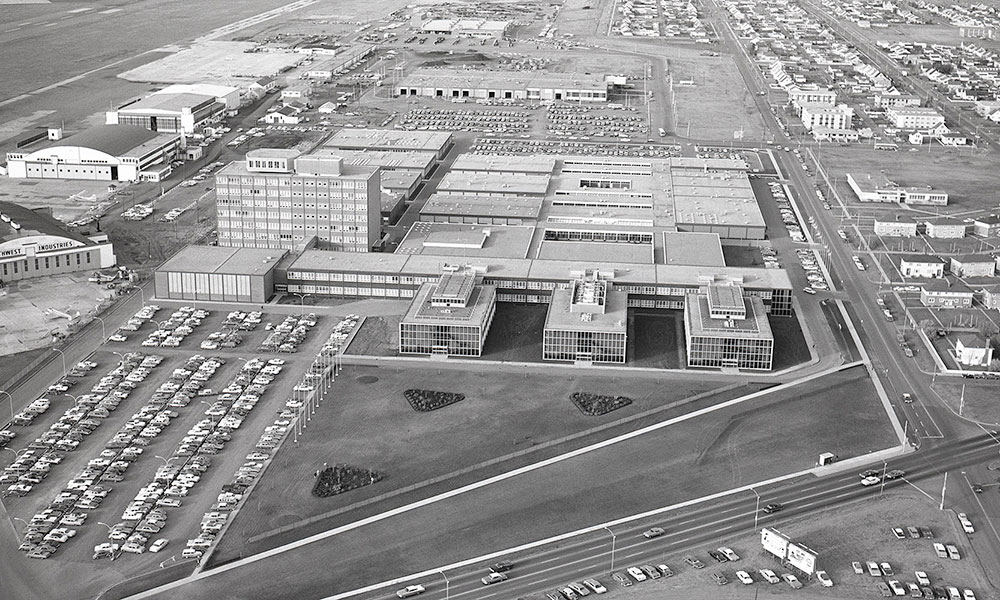
When it opened, the original complex that now composes most of the western half of NAIT’s Main Campus was a leading example of modernist architectural design. Instead of the flourishes and ornamentation of buildings at older post-secondary institutions, the polytechnic was defined by sleek lines of concrete, steel and those walls of glass.
The building was largely inspired by the “International style” embodied by the Illinois Institute of Technology in Chicago. As described in Capital Modern, a guide to Edmonton architecture from 1940 to 1960, the “traits can be seen in the … gridlike pattern of the buildings, separated by streets and landscaped courtyards and the low-rise nature of the rectilinear precast concrete frames clad in brick and glass.”
Almost certainly, the style is also captured in the futuristic angularity of von Svoboda’s work.
Restored to former glory
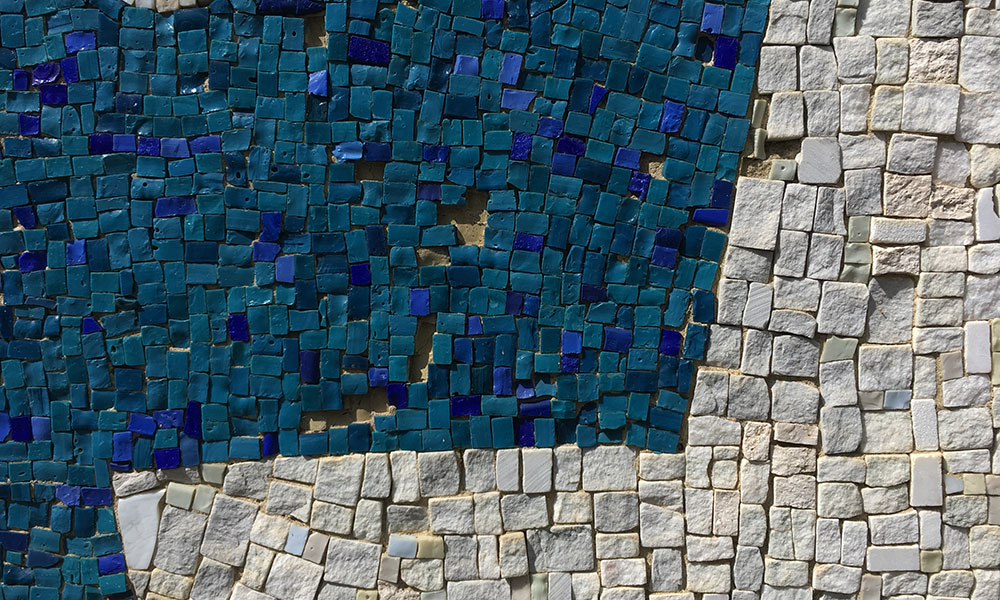
After more than five decades of freezing and thawing during stone-chilling winters and full exposure to intense summer sun, the mosaic received overdue attention in 2019.
NAIT contracted Edmonton-area Decor Tile Company to repair cracked grout lines and replace pitted and missing tiles. The work to make the mosaic nearly new again took roughly a month.
A vision of the future
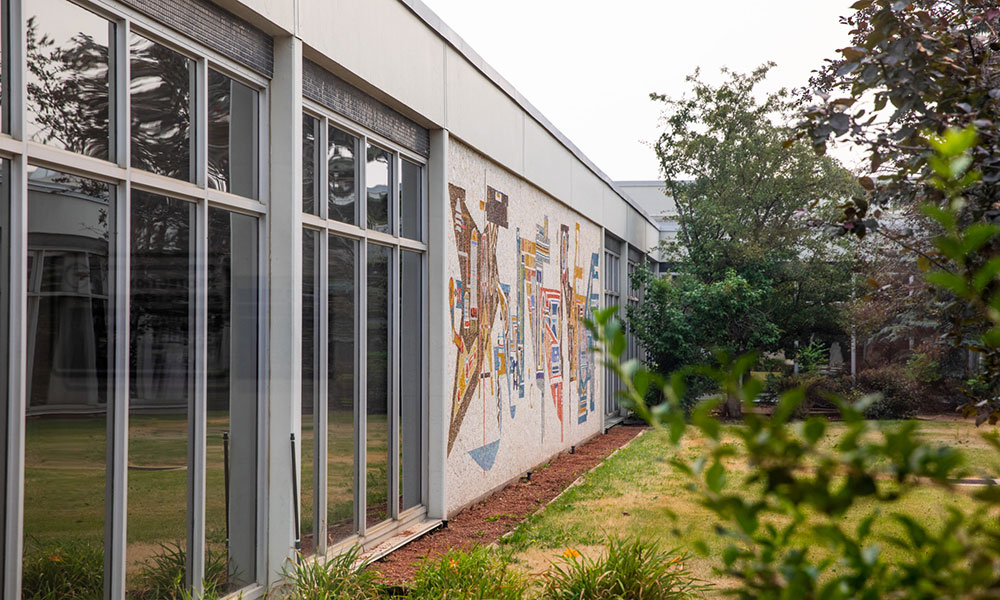
In the 1964 edition of The Northern Torch, the former NAIT student yearbook, Trevor Edwards (Architectural Technology ’65) wrote, “If the new, and slightly confused, student of N.A.I.T. glances to his right as he comes through the main door of this institute, he will come upon a sight that rivals his own confused state of mind.”
That sight, of course, was the then-recently completed technology mosaic.
To add to the confusion, the photo accompanying Edward's entry in The Northern Torch does not show the mosaic. Nevertheless, his reverence for von Svoboda's work is clear. To him, it was a picture of the future of every grad.
“At first the mural does look a bit confusing, but after a while one comes to realize that it is depicting the many facets of the modern world that we will become a part of when we leave [NAIT].
“Our mural is nothing less than a portrayal of our lives to come.”